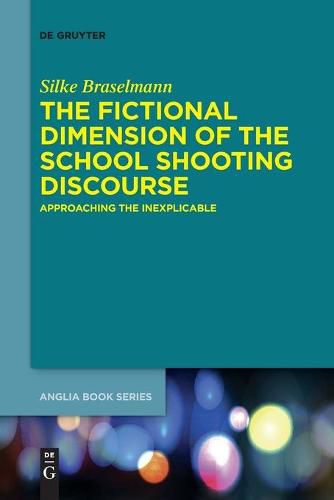Readings Newsletter
Become a Readings Member to make your shopping experience even easier.
Sign in or sign up for free!
You’re not far away from qualifying for FREE standard shipping within Australia
You’ve qualified for FREE standard shipping within Australia
The cart is loading…






Ever since the 1990s, school shootings have shocked the public in their brutality, their suddenness, and their inexplicability. While film and literature have played a role in the heated debates about so-called copycat crimes, the growing body of fictionalizations of school shootings has been neglected thus far. However, in a discourse in which the boundaries between fiction and reality are increasingly blurred, this book shows how fiction shapes and structures, challenges and disrupts cultural processes of meaning-making. Hence, for a better understanding of the school shooting phenomenon, the relevance of fiction on all levels of discourse construction requires thorough analysis. This book therefore develops a new approach to the role of fiction for contemporary forms of excessive violence. By combining narrative theory with insights from sociology and other disciplines, it provides the means for apprehending and describing the relevance of fiction for contemporary discourses. Furthermore, it provides exemplary analyses of more specific functions of literary and filmic fictionalizations of school shootings between 2000 and 2016.
$9.00 standard shipping within Australia
FREE standard shipping within Australia for orders over $100.00
Express & International shipping calculated at checkout
Stock availability can be subject to change without notice. We recommend calling the shop or contacting our online team to check availability of low stock items. Please see our Shopping Online page for more details.
Ever since the 1990s, school shootings have shocked the public in their brutality, their suddenness, and their inexplicability. While film and literature have played a role in the heated debates about so-called copycat crimes, the growing body of fictionalizations of school shootings has been neglected thus far. However, in a discourse in which the boundaries between fiction and reality are increasingly blurred, this book shows how fiction shapes and structures, challenges and disrupts cultural processes of meaning-making. Hence, for a better understanding of the school shooting phenomenon, the relevance of fiction on all levels of discourse construction requires thorough analysis. This book therefore develops a new approach to the role of fiction for contemporary forms of excessive violence. By combining narrative theory with insights from sociology and other disciplines, it provides the means for apprehending and describing the relevance of fiction for contemporary discourses. Furthermore, it provides exemplary analyses of more specific functions of literary and filmic fictionalizations of school shootings between 2000 and 2016.